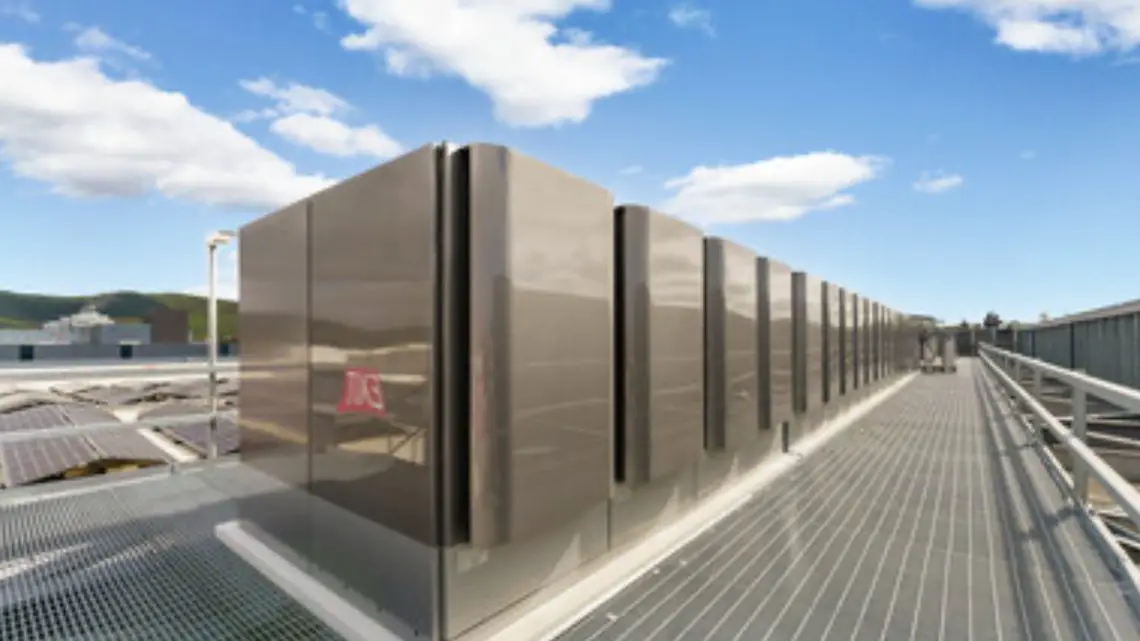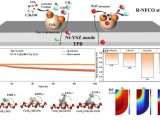
Equinix Clean Energy Strategy: Fuel Cells and Next-Gen Nuclear for Data Centers
August 14, 2025In August 2025, Equinix, Inc. — a global digital infrastructure powerhouse — dropped some exciting news: they’re supercharging their Equinix clean energy roadmap. With AI workloads going through the roof and traditional power grids groaning under the strain, Equinix is cranking up onsite generation like never before. Today, over 100 MW of Bloom Energy solid oxide fuel cells hum away at 19 US data centers, and that’s just the start. Future power deals include 500 MW from Oklo, modular microreactors from Radiant, a Rolls-Royce SMR partnership via ULC-Energy, and next-gen molten salt reactors from Stellaria. If you ask me, the grid-only era for data centers is officially on its way out.
You might think this is a sudden shift, but it actually traces back to 2015. That year, Equinix ran a small pilot in Silicon Valley, testing Bloom’s first solid oxide fuel cells at an IBX data center. The goal? See if distributed generation could hit strict uptime targets and take some heat off the local grid. Fast-forward a decade, and that tiny experiment has blown up into a fleet powering critical cloud and AI infrastructure across six states.
Here’s the kicker: AI compute demand is projected to double every three years, pushing data center energy needs sky-high. At the same time, global decarbonization targets are tightening the screws on carbon budgets, so buying renewable credits just isn’t enough. Equinix’s hybrid approach—combining data center fuel cells with firm nuclear baseload—delivers the low emissions and bulletproof reliability that enterprises running AI and cloud-native applications absolutely need.
Can Data Center Fuel Cells and Small Modular Reactors Deliver Clean, Reliable Power for Surging AI Workloads?
Let’s face it: data centers are the unsung heroes behind the AI boom, but they’re also energy behemoths. As compute demand climbs, so does power consumption—leaving operators exposed to grid bottlenecks, price volatility, and carbon-intensity headaches. Equinix’s answer? Lean in with a hybrid mix that pairs the proven efficiency of Bloom’s fuel cells with the steady, baseload promise of small modular reactors and portable microreactors. By generating power onsite, servers tap directly into clean, robust energy—and businesses sleep better at night.
Unlike old-school gas peaker plants, SOFCs respond instantly to load swings, while SMRs sidestep the intermittency of wind and solar. This combo means predictable output with minimal carbon footprint—a killer proposition when a millisecond of latency or an unexpected outage can translate to millions in lost value.
How Do These Technologies Keep the Lights On?
- Solid Oxide Fuel Cells (SOFCs): Bloom Energy’s high-temperature cells turn hydrogen or hydrocarbons straight into electricity at over 60% efficiency, with almost zero air pollution and no water consumption. Rolled out at 19 Equinix hubs, they’re offsetting roughly 285,000 metric tons of CO₂e and saving an eye-popping 382 billion gallons of water every year.
- Fast Reactors: Oklo’s compact fast reactors run on recycled nuclear waste, closing the fuel loop and slashing long-lived radiological inventory. A 500 MW supply deal positions Oklo as the first SMR partner for a major data center operator.
- Light-Water SMRs: Rolls-Royce’s factory-built light-water reactors—delivered in collaboration with ULC-Energy in the Netherlands—promise modular scalability, simplified safety systems, and up to 250 MWe under a letter of intent.
- Microreactors: Radiant’s Kaleidos units are designed for rapid deployment with a minimal footprint, offering tens of megawatts of low-carbon power at edge sites. Equinix has preordered 20 modules to shore up critical loads.
- Molten Salt Breed & Burn: Stellaria’s innovative molten salt design breeds new fuel as it runs, enabling ultra-long operating periods without refueling. A 500 MWe European deal could set the stage for next-gen baseload energy.
Global Footprint and Impact
While Bloom’s SOFCs anchor Equinix’s US expansion—spanning California, Texas, Virginia, Oregon, and two other states—the nuclear strategy reaches across Europe. In the UK, Rolls-Royce SMRs are gearing up for early deployment under supportive regulations. Over in France, CEA’s incubation of molten salt technology gives Stellaria a head start, and ULC-Energy’s Netherlands project lays the groundwork for further continental growth. This cross-continental mix not only diversifies energy supply but also turbocharges the commercialization of advanced nuclear technologies.
Europe’s policy environment—think the EU’s Strategic Energy Technology Plan and the UK’s Nuclear Sector Deal—is slashing investment barriers. When public-private partnerships get involved, SMR demos go from blueprints to reality at warp speed, making Europe a hotbed for the next wave of nuclear innovation.
Who’s Behind the Power Push?
- Equinix, Inc.: Since 1998, Equinix has built over 250 data centers in 71 metros, reaching 96% renewable energy coverage in 2024 and shooting for 100% by 2030.
- Bloom Energy Corporation: A pioneer in data center fuel cells, Bloom has delivered more than 100 MW to Equinix, proving that onsite generation scales.
- Oklo: Fast reactor crusaders using recycled waste as fuel; they’ve secured the first SMR–data center pairing.
- Radiant: Creators of the Kaleidos microreactor for plug-and-play nuclear power at critical sites.
- ULC-Energy & Rolls-Royce SMR: Dutch nuclear project developer teaming up with Rolls-Royce to roll out light-water SMRs.
- Stellaria: Backed by Schneider Electric and CEA, advancing molten salt reactors for sustainable baseload.
Environmental and Community Benefits
There’s more to this than just slashing your utility bill. These projects alleviate stress on aging transmission grids, cut local air pollutants, and shrink water footprints—huge wins in drought-prone areas. Fuel cells operate quietly, easing noise concerns at urban edge facilities. Microreactors could bring reliable power to remote communities—think hospitals or telecom towers—without massive site prep. And nuclear SMRs and molten salt reactors deliver consistent output for years, knocking backup diesel generators off their pedestal and reducing operational risk.
On top of that, these projects spark local workforce development. Building and maintaining advanced reactors and fuel cell arrays trains a new generation of technicians in clean energy, bolstering regional economies alongside environmental benefits.
Why It Matters
Equinix’s blended strategy sets a fresh benchmark in Equinix clean energy. By fusing reliable fuel cells with next-gen nuclear, they’re insulating themselves from price swings and blackouts while charging toward a 2030 net-zero goal. It’s also a bold message to regulators and investors: advanced nuclear isn’t just a moonshot—it’s ready for prime time. The shift from buying renewable credits to securing direct power purchase agreements underscores a broader trend: data centers taking control of their energy destinies.
“We’re not just buying electrons; we’re architecting a sustainable future for digital infrastructure,” says Sarah Pratt, Equinix’s Head of Sustainability.
Looking Ahead
Right now, Bloom’s fuel cells are ticking reliably, but the SMRs and microreactors still face familiar hurdles—regulatory green lights, supply chain scale-up, and public acceptance. Yet with landmark power purchase deals in hand, these technologies are stepping out of the lab and into the data center’s heart. Over the next five years, expect to see pilot SMR modules go live, community microreactor rollouts, and molten salt reactors join the mix. If Equinix’s model holds up, it could become the blueprint for the entire industry. Hyperscalers like AWS, Google, and Microsoft are already kicking the tires on SMRs and fuel cells, but none have combined them at this scale. If these pilots succeed, we’ll likely witness a wave of data centers adopting hybrid clean baseload solutions—reshaping energy markets and accelerating the march toward a carbon-neutral digital ecosystem.
As digital demand soars, every data center operator will face the same question: will you keep buying power, or will you start making it? Equinix’s answer might just become the new playbook for a resilient, low-carbon digital future.



 With over 15 years of reporting hydrogen news, we are your premier source for the latest updates and insights in hydrogen and renewable energy.
With over 15 years of reporting hydrogen news, we are your premier source for the latest updates and insights in hydrogen and renewable energy.